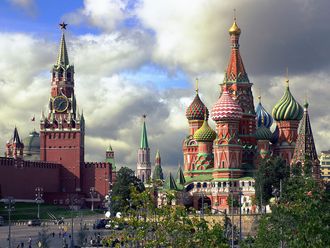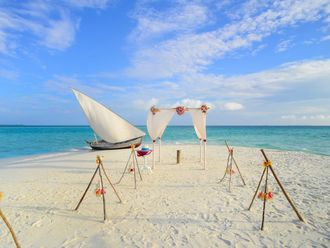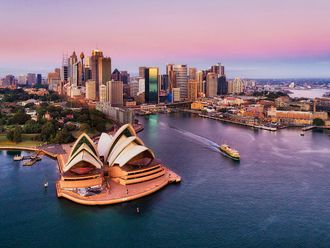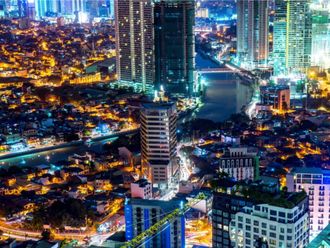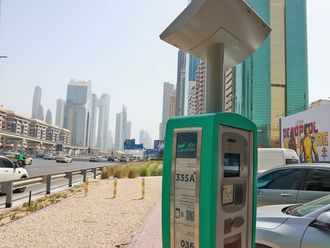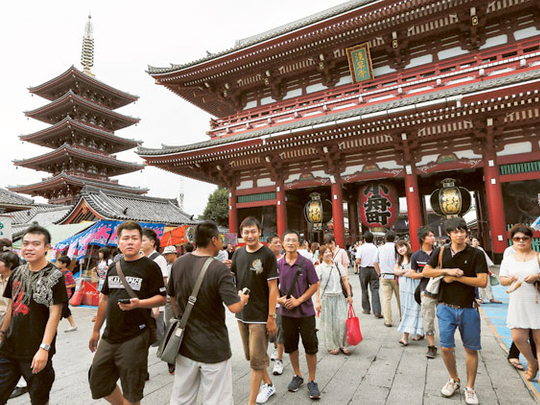
Beijing: The Chinese are on the verge of leapfrogging the Germans and Americans to become the nation whose tourists spend the most money overseas, as the idea of foreign travel captures the imagination of millions of newly affluent citizens in the world’s most populous country.
The World Tourism Organisation predicts that the number of overseas trips made by Chinese people will surge from 70 million last year to 100 million by the end of the decade, from just 5 million 15 years ago.
Though they spend on average less than their western counterparts, the number of travellers means the total is high — and rising. China’s travellers overseas spent $54 billion (Dh198.35 billion) in 2010 and $72 billion last year, compared with $84 billion for Germans and $79 billion for the US. Officials say the first five months of 2012 saw a 20 per cent increase in Chinese tourists leaving the country.
The vast majority of Chinese citizens still holiday at home, if they are lucky enough to afford a trip at all. For those who venture further afield, the top destinations are Hong Kong and Macau — both part of China, but ruled under separate systems. Many of those journeys are little more than day trips to shops or casinos.
But thanks to the expanding middle class, a surge of Chinese tourists has helped to fill hotel beds and cash tills from South Africa to Italy. The luxury stores of Paris are well-staffed with Mandarin speakers, while hotels in London are learning to offer congee (rice porridge) as well as croissants for breakfast and quilts instead of blankets. Selfridges and Harrods started taking China’s Union Pay bank card last year.
Varied destinations
The popular destinations are becoming more varied. Jiang Yiyi, a researcher at the Chinese tourism academy, says people are increasingly keen to take beach or activity holidays rather than simply traipsing round tourist sites.
“In the past, travel packages like 11 European countries in 13 days were very popular, because Chinese tourists cared a lot about the number of countries they could visit,” Wang Yali, marketing manager at China Travel Service (CTS), said. “Nowadays, they pay more attention to comfort and additional activities. They hope they have enough time to enjoy the sites. They tend to choose 10 days in Greece, or in the UK, France, and Switzerland.”
While Chinese tourists do more shopping than others — partly because of the sky-high luxury taxes at home — scenery and culture are bigger draws, Wang said.
There are also peculiarly Chinese must-sees. Montargis, a small town south of Paris, is a popular stop because key leaders such as Deng Xiaoping lived there in the 1920s. In Cambridge, tourists flock to King’s College not for its celebrated chapel but to see a willow by the river, immortalised in one of the best-known modern Chinese poems, Xu Zhimo’s On Leaving Cambridge.
Overall, Asian, Australian, and European destinations still top the list; officially, the UK is more popular than France and Germany, though figures are skewed because while Schengen European visas allow people to visit several countries within Europe (but not the UK) on a single visa, they will only be registered at their point of arrival.
Wooing travellers
But these days, Israel, Tahiti, and the Maldives are appearing on itineraries too. CTS has begun chartering flights to the Seychelles for the first time.
Destinations are keen to woo Chinese travellers. While official statistics suggest the average Chinese tourist spends $1,000 a trip, Jiang said that research for the China tourism academy showed that some spend 100,000 yuan (Dh57,930) on shopping alone. According to Global Blue, a shopping tourism company, 20 per cent of all tax-free shopping is by Chinese customers.
“Most of our readers aren’t travelling to take photos or go to tourist sites, but to experience a different lifestyle. For them, the destination is not the most important thing; the question is how to travel,” Li Ying, a senior associate editor at National Geographic Traveller, said. “When I wrote a travel feature about London, I advised them on how to live like a Londoner, go to local pubs, and experience the local culture.”
China’s economic development has not only allowed people to travel, it has also encouraged them to do so, as priorities have changed. For a small but growing number of young people, personal satisfaction and exploration are becoming as important as wealth and security.
“The most important thing is being happy,” a Beijing-based IT worker, Bao Chao, who said he and his wife had not looked back since giving up high-flying careers, said. Last year, they took the unusual step of blowing most of the family savings on a three-month trip across China with their baby daughter. The 29-year-old’s account of the journey caused a stir online, with thousands of users praising him as an inspiration or castigating his irresponsibility in spending their nest egg on travel, taking such a long break and touring with such a small child.
“We just wanted to have a family trip and spend time together. I am sure many rich Chinese families could have had an even better holiday, but they do not have time to do it. We made time,” he said. “When we have enough money, we’d like to go on a road trip in the US or Europe.”


